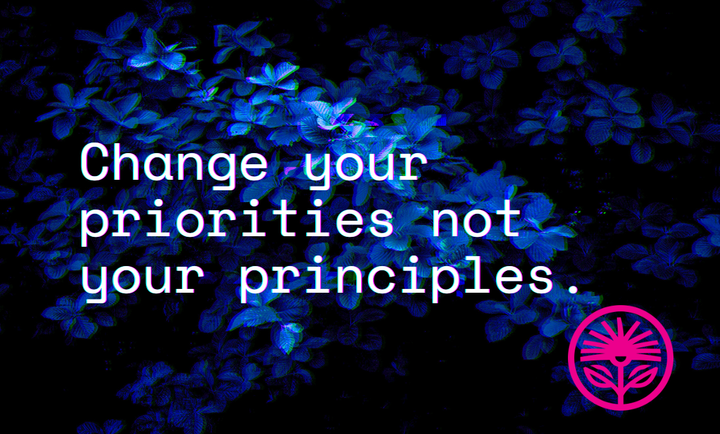Kelford Labs Weekly: Value Writing Follow-Along
Writing based on your value, step by step.

This week, we’re doing a classic “follow-along.”
If you want to be able to sum up what you do for your very best customers, in a simple, pithy line or expression, you’ll want to grab a pen and paper (or fire up a text editor) and follow along.
This is a process I developed to help me write marketing copy under pressure and deadline, when creativity needs structure to come together quickly.
Now, I can’t promise you’ll have the perfect tagline or ad copy at the end of this, but you’ll be a lot closer to it, because you’ll be a lot better at expressing your value quickly and simply when it matters most.
We’re going to go through five steps, working our way through levels of literalness and abstraction to identify what’s at the core of your ability to deliver value, and what the customer needs to hear to have it effectively demonstrated to them.
Let’s go:
Step 1: Literal But Abstract
What do you sell? We want to be as literal as possible, but as abstract as possible.
What I mean is, I would say I sell “marketing services.” It’s literal—it’s a simple fact. But it’s abstract—it doesn’t actually tell you anything about what I do, does it?
So, if you run a bookkeeping firm, you sell “bookkeeping services.” Graphic designer? “Design services.” Shoe retailer? “Shoes.” You get the idea.
What bucket would a customer put you in?
Your Answer:
Step 2: Literal But More Concrete
Now we’re going to take one tiny baby step toward more concrete language.
Our bookkeeper might now say, “tax preparation.”
Our designer might say, “branding and identity design.”
I might say, “business positioning” or “value proposition design.”
Essentially, how would you describe what you do to a friend who vaguely gets what you’re up to?
Your answer:
Step 3: Literal and Concrete
Now, let’s get as concrete as possible. What do you actually, really, truly do?
For me, “I help business owners describe their product or service in a way that attracts their ideal customers.”
Our bookkeeper might say, “I help businesses pay their taxes on time and keep detailed records.”
Our designer might say, “I create logos and design instructions for business owners to look more professional and credible.”
The idea here is to be able to describe what you do accurately, to someone who has no built-in knowledge of your work, your business, or perhaps even your industry.
Think about it this way: How would you explain what you do to a surprisingly bright kid?
Your answer:
Step 4: Concrete But More Abstract
So now that we’ve completely sucked the fun out of our business, let’s take the next step—adding in some abstraction.
You know what you do, but what does that mean for your customers? What feeling do you want to evoke? What impression do you want to give?
This is where customer research can be so helpful. What do customers actually say to other people about what you do, sell, or provide?
What’s the value in their words? Mine your testimonials and reviews for insights.
For me, I want my best customers to know that describing their business to others can be comfortable and fun, not stressful or “sales-y.” So for my little touch of abstraction, I might say, “I help business owners know what to say to attract their very best customers—without becoming someone or something they’re not.”
Our bookkeeper might say, “I help businesses pay their taxes on time and keep detailed records—so they can focus more on what they do best.”
Our designer might say, “I give business owners a brand and logo that they want to show off—instead of hide.”
Your answer:
Step 5: Concrete and Abstract
Finally, let’s add one more level of abstraction and speak straight to the motivations and values of our very best customer. In fact, at this phase, we want to turn it into a promise.
You know what you do, but how does the particular way you do it help your very best customer, and in what way?
This is where you want to be on guard against reintroducing jargon. If you find yourself falling back on your industry category or the name of your product, take a pause.
Think: what does the person who needs this most want to feel as a result of buying it?
For me, I could say, “I make sure you always know what to say—and where and when to say it—to grow the business you want.”
Our bookkeeper might say, “I make sure your books never get in the way of you building your business.”
Our designer might say, “I make sure your brand can speak for itself, so you don’t have to explain it.”
Your answer:
Wrapping Up
So, how did you do? Where did you end up?
I started with “marketing services,” which is true, accurate, and literal.
But I ended with, “I make sure you always know what to say—and where and when to say it—to grow the business you want.”
Which is so much more concrete and clear about the value my services provide. And it promises something real and useful to the people who value it most.
What about you?
Do you feel better about how you can articulate your value? Are you more equipped to express and demonstrate it in words your best customers can understand and appreciate?
Where could you test out this approach and this language? Could you give it a bit of a polish and make it the first line in an upcoming social media post?
Is it a good opener for a new blog or newsletter issue?
Does your sales sheet need a new headline?
Test it out, experiment, and keep adjusting.
Reply to this email or reach out to labs@kelfordinc.com to tell me how it went!



